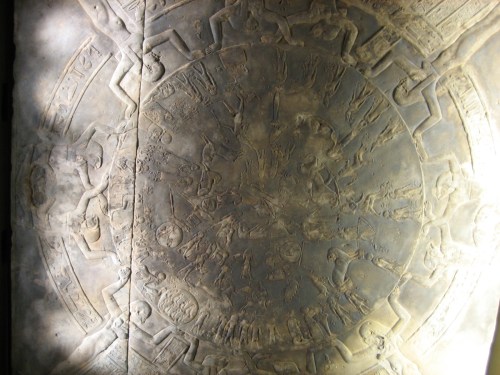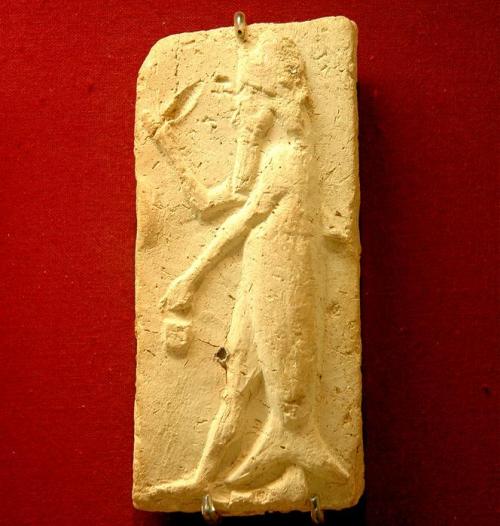Hesiod, the Great Year, and the Phoenix
“In the discussion of the Classical conception of the Great Year it was mentioned that Plato was the first author to make a clear statement about this cosmic period. He referred to an almost inconceivably long time, which he could characterize only by saying that at the completion of such a cosmic revolution the perfect number of time comprises the perfect year. It remains possible, however, that in another connection he assigned a specific duration to the Great Year.
In the eighth book of Politeia, Plato discusses the question of how an aristocracy can become degraded into a timocracy, i.e. a form of government in which ambition is the dominant principle of the rulers. (Plato, Politeia, VIII, 3, 544d-547c).
This occurs, he says, because the Guardians will not be able, by calculation and observation, to determine the appropriate times for birth. In an extremely difficult passage which has given rise to many commentaries he then gives the computation of what is incorrectly called the “nuptial number.” (A. Diès, Le nombre de Platon, essai d’exégèse et d’histoire, Académie des Inscriptions et Belles-Lettres, XIV, Paris, 1936, and others).
Plato begins by remarking that for the divine creature there is a period embraced by a perfect number. (Plato, Politeia, VIII, 3, 546b). This is reminiscent of his statement that the duration of the Great Year can be expressed in a perfect number.

The zodiac is a planisphere or map of the stars on a plane projection, showing the 12 constellations of the zodiacal band forming 36 decans of ten days each, and the planets. These decans are groups of first-magnitude stars. These were used in the ancient Egyptian calendar, which was based on lunar cycles of around 30 days and on the heliacal rising of the star Sothis (Sirius).
The celestial arch is represented by a disc held up by four pillars of the sky in the form of women, between which are inserted falcon-headed spirits. On the first ring 36 spirits symbolize the 360 days of the Egyptian year.
On an inner circle, one finds constellations, showing the signs of the zodiac. Some of these are represented in the same Greco-Roman iconographic forms as their familiar counterparts (e.g. the Ram, Taurus, Scorpio, and Capricorn, albeit most in odd orientations in comparison to the conventions of ancient Greece and later Arabic-Western developments), whilst others are shown in a more Egyptian form: Aquarius is represented as the flood god Hapy, holding two vases which gush water. Rogers noted the similarities of unfamiliar iconology with the three surviving tablets of a “Seleucid zodiac” and both relating to kudurru, “boundary-stone” representations: in short, Rogers sees the Dendera zodiac as “a complete copy of the Mesopotamian zodiac”.
http://en.wikipedia.org/wiki/Dendera_zodiac
For the elucidation of “the divine creature,” reference can be made to the statement in the Timaeus that the Demiurge himself was only the creator of the fixed stars, the planets, and the earth. (Plato, Timaeus, 39e-40b.)
It is therefore probable that the reference in the Politeia to a period comprising a perfect number as belonging to that which the deity generates, should be seen as the duration of the complete cosmic revolution of the Great Year.
But for human creatures, says Plato, there is a geometric number, and this is the one for which he supplies the complex computation already mentioned. Especially since the research done by Diès there has been general agreement that this geometric number, which can be computed in several different ways, is 12,960,000.
To provide the long-sought harmony between the various components of this passage, it has been assumed that the perfect number of the divine creature is the same as the whole geometric number holding for human procreation, the component factors of the geometrical number having special relevance for the latter. (Ahlvers, 19-20, basing himself on 12,960,000 days = 36,000 years).
If this is valid, it may be concluded that in the Politeia Plato assumed a duration of 12,960,000 years for the Great Year.
Even if Plato did not mean that the perfect number of the rotation of that which the deity generates is equal to the geometric number, it would nevertheless have to be taken as probable that the number 12,960,000 originally pertained to the duration of the Great Year and that there is a relationship to the concept underlying Hesiod, frg. 304, since this fragment assumes a cycle of four successive world eras forming together a Great Year of 1,296,000 years. The Platonic number—which, incidentally, is a Babylonian sar squared—is thus ten times Hesiod’s value.”
R. van den Broek, The Myth of the Phoenix: According to Classical and Early Christian Traditions, Brill Archive, 1972, pp. 98-9.)


